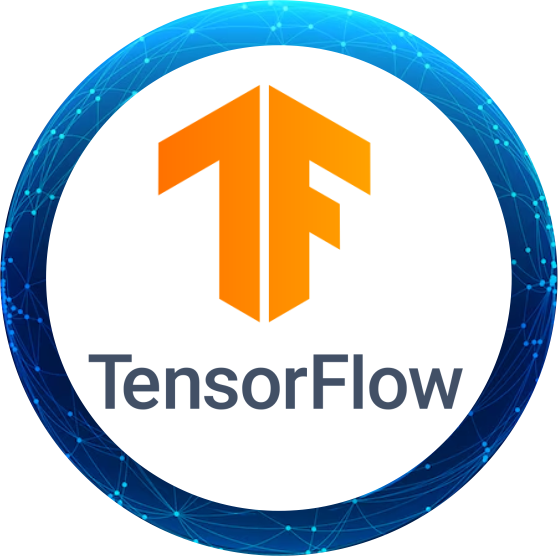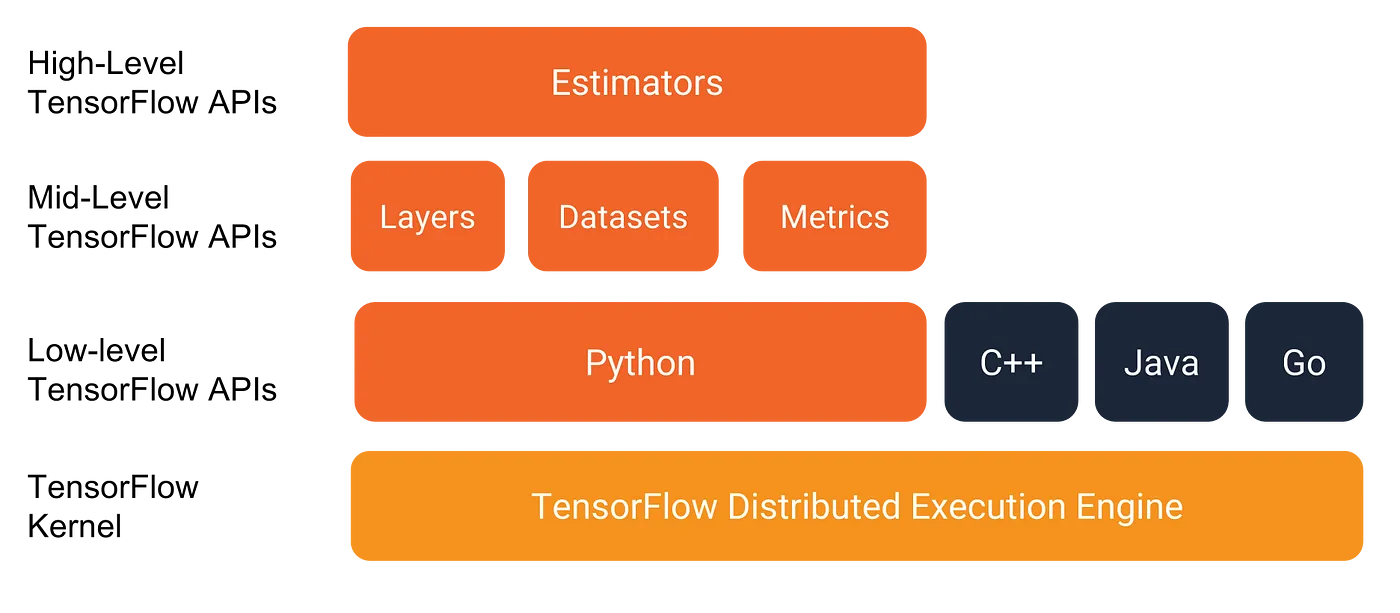Tensor Flow


in Data Science and AI
TensorFlow is a powerful open-source library developed by Google for building and deploying scalable machine learning and deep learning models.
It supports both research and production-grade workflows, making it ideal for academic projects and industry use.
With TensorFlow, you can build neural networks, deep learning models, and even complex architectures like GANs and Transformers.
Its support for GPU/TPU acceleration ensures high-performance training and inference for large datasets.
TensorFlow offers an easy-to-use high-level API (
tf.keras), making it accessible for beginners and scalable for professionals.It integrates well with tools like TensorBoard, TFX, and TensorFlow Lite, enabling model tracking, deployment, and mobile AI.
It powers many real-world AI applications, from voice recognition and image classification to NLP and recommender systems.
TensorFlow’s auto-differentiation and graph computation make it suitable for gradient-based learning and optimization.
It supports cross-platform deployment—from cloud to edge devices—ensuring models run in diverse environments.
Mastering TensorFlow provides a solid foundation for building and deploying production-ready AI systems.

Module 1: Introduction to TensorFlow
What is TensorFlow?
History and ecosystem overview
TensorFlow vs PyTorch
Installing TensorFlow and setting up the environment
First "Hello, World" in TensorFlow
Module 2: TensorFlow Fundamentals
Understanding tensors (scalars, vectors, matrices)
Tensor operations and broadcasting
Tensor datatypes and shapes
Creating tensors from arrays and constants
Indexing, slicing, reshaping tensors
Module 3: TensorFlow Computation Graphs
Eager Execution vs Graph Execution
Building a computation graph
Sessions and lazy execution (historical overview)
tf.function and Autograph
Module 4: Automatic Differentiation and Gradients
Introduction to gradients and backpropagation
tf.GradientTape()for custom trainingComputing gradients for scalar and vector functions
Chain rule in deep learning models
Module 5: Building Neural Networks with tf.keras
Overview of Keras API in TensorFlow
Sequential API:
Dense layers, activation functions
Functional API:
Multi-input/output models
Shared layers and complex architectures
Model compilation and training (
fit())Model evaluation and prediction
Module 6: Data Input Pipeline
Working with NumPy arrays and Pandas in TensorFlow
TensorFlow Datasets (
tf.data.Dataset)Data loading and batching
Data augmentation and preprocessing
Shuffling, caching, prefetching
Module 7: Model Training and Optimization
Loss functions and optimizers
Learning rate scheduling
Custom training loops:
Writing training step manually
Using
@tf.functionfor performance
Early stopping and checkpointing
Module 8: Convolutional Neural Networks (CNNs)
Building CNNs with
Conv2D,MaxPooling2D,FlattenImage classification pipeline
Transfer learning with pre-trained models (VGG16, ResNet)
Fine-tuning and freezing layers
Visualizing CNN filters and activations
Module 9: Recurrent Neural Networks (RNNs)
Sequence data handling with RNNs
LSTM and GRU layers
Text classification with RNNs
Embedding layers and tokenizer
Sequence padding and batching
Module 10: Natural Language Processing with TensorFlow
Text preprocessing with TensorFlow and Keras
Word embeddings (Word2Vec, GloVe, Keras Embedding)
Text classification and sentiment analysis
Building Seq2Seq models for translation
Introduction to Transformers in TensorFlow
Module 11: Model Evaluation and Visualization
Accuracy, precision, recall, F1 score
ROC curves and confusion matrices
TensorBoard setup and usage
Logging metrics and visualizing training
Module 12: Saving and Loading Models
Saving entire models, weights, and architecture
Model serialization with HDF5 and
SavedModelModel versioning
Loading models for inference
Module 13: TensorFlow for Deployment
Exporting models for TensorFlow Serving
Creating REST APIs using Flask or FastAPI
TensorFlow Lite for mobile and edge deployment
TensorFlow.js for deploying in browsers
Module 14: Advanced Topic
Custom layers and models using
tf.keras.LayerWriting custom training loops with gradient tape
GANs in TensorFlow
Autoencoders
Introduction to Reinforcement Learning using TensorFlow Agents
Module 15: Tools and Ecosystem
TensorBoard
TensorFlow Hub for pre-trained models
TensorFlow Model Garden
TensorFlow Extended (TFX) for ML pipelines
Module 16: Capstone Projects
Image classifier for plant disease detection
Sentiment analysis on movie or product reviews
Build a chatbot using RNN or Transformer
Deploy a trained model on mobile using TFLite
Create a full ML pipeline using TF + Flask + Web UI

